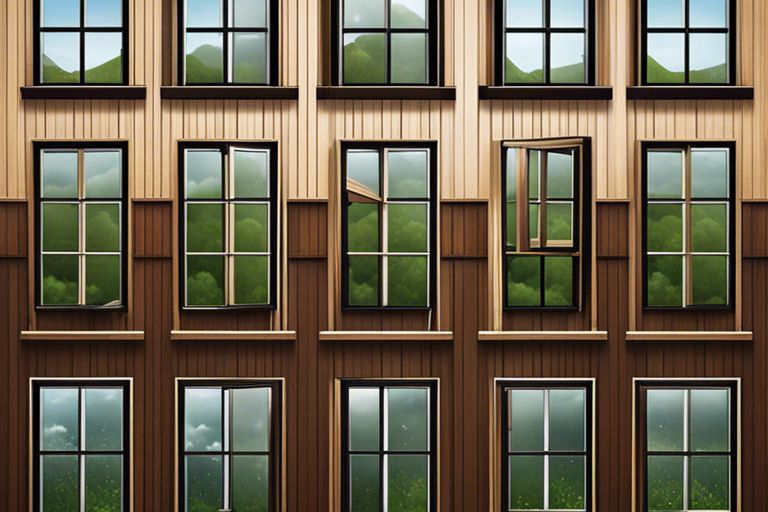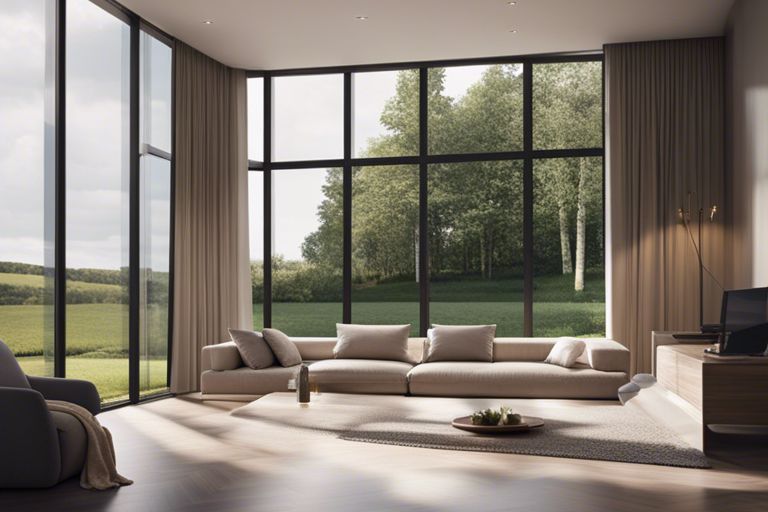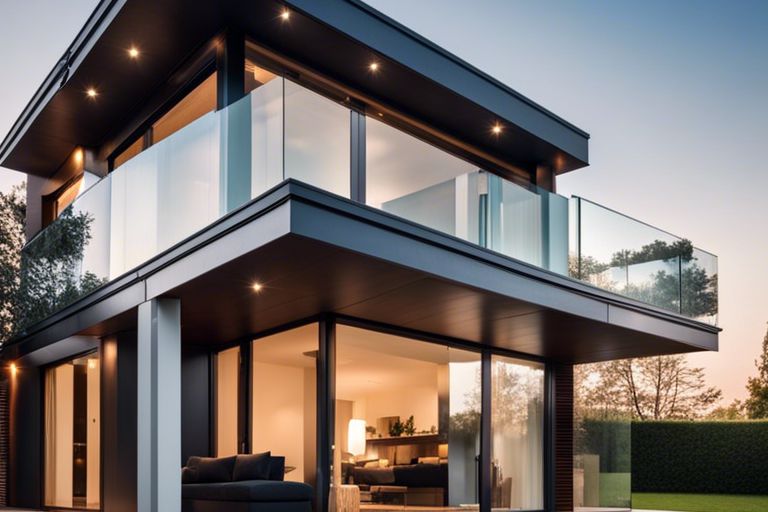When it comes to exterior design, paying attention to every detail is vital, and one essential element that should not be overlooked is curtain wall capping. These finishing touches not only enhance the aesthetics of a building but also provide crucial protection against weather elements. Curtain wall capping serves as a barrier, preventing water infiltration and potential damage to the structure. Additionally, it adds a sleek and polished look to the overall design, elevating the appearance of the building. Choosing the right materials and design for curtain wall capping can make a significant difference in the durability and visual impact of a building, making it a crucial consideration for any exterior design project.
Key Takeaways:
- Elegance: Curtain wall capping adds an elegant finishing touch to the exterior design of buildings.
- Protection: It provides protection to the top of the curtain wall by preventing water ingress and reducing maintenance needs.
- Customisation: Curtain wall capping is available in various materials and finishes, allowing for customisation to suit the aesthetic requirements of the building.
Types of Curtain Wall Capping
When it comes to curtain wall capping, there are several types to consider. Each type offers a unique look and functionality to the overall design. Understanding the different options available can help you make an informed decision for your building’s exterior.
- Aluminium Capping
- Stone Capping
- Glass Capping
- Terracotta Capping
- Composite Capping
Perceiving the advantages and disadvantages of each type of capping is crucial in achieving the desired aesthetic for your building while ensuring durability and weather resistance.
Materials Used in Capping
When it comes to materials used in curtain wall capping, the most common ones include aluminium, stone, glass, terracotta, and composite materials. Aluminium capping offers durability and a sleek modern look, while stone capping provides a more traditional and elegant appearance.
Glass capping adds a touch of sophistication and allows for natural light to penetrate the building, whereas terracotta capping offers a unique texture and can be customised in various colours. Composite capping combines different materials to achieve both aesthetic appeal and functional benefits.
Styles and Design Considerations
When considering styles and design for curtain wall capping, it is important to take into account the overall architectural theme of the building. The capping should complement the facade and enhance the visual appeal of the structure. Choosing the right style and design can make a significant impact on the building’s exterior appearance, setting it apart from others in the vicinity.
Importantly, the design of the capping should also take into consideration practical aspects such as weather resistance, maintenance requirements, and installation ease. Combining both aesthetic and functional considerations can result in a well-balanced and visually pleasing curtain wall capping design.

Installation Process of Curtain Wall Capping
When it comes to the finishing touches on an exterior design, the installation of curtain wall capping plays a crucial role. The process of installing curtain wall capping requires attention to detail, precision, and adherence to best practices to ensure a seamless and visually appealing finish.
Pre-installation Planning and Design
Prior to the installation of curtain wall capping, thorough pre-installation planning and design is essential. This phase involves assessing the structural requirements, determining the appropriate materials, and creating detailed installation plans. It is crucial to ensure that the design is functionally and aesthetically sound to achieve the desired outcome.
During the pre-installation phase, it is important to consider factors such as weather exposure, structural integrity, and compatibility with existing building elements. Any potential challenges or obstacles should be identified and addressed to prevent delays or complications during the installation process. By conducting a comprehensive pre-installation assessment, designers and contractors can mitigate risks and ensure a successful installation.
Installation Techniques and Best Practices
When it comes to the installation of curtain wall capping, employing proper techniques and best practices is crucial for achieving a high-quality finish. This includes ensuring that the capping is level, securely anchored, and sealed to prevent water infiltration and maintain structural integrity. Additionally, attention should be paid to detailing and jointing to achieve a seamless appearance.
One of the key considerations during the installation process is the use of appropriate fixing methods and materials. It is important to follow manufacturer recommendations and industry standards to ensure the capping is installed correctly and will perform as intended. By adhering to best practices, designers and contractors can enhance the longevity and durability of the curtain wall capping, resulting in a visually pleasing and structurally sound exterior finish.

Maintenance and Durability
When it comes to curtain wall capping, ensuring proper maintenance is crucial to guarantee its longevity and durability. Regular upkeep can help prevent issues and ensure the capping continues to protect the building as intended.
Routine Maintenance for Longevity
To maximise the lifespan of curtain wall capping, it is important to conduct routine maintenance checks. This includes inspecting the capping for any signs of wear and tear, such as cracks, leaks, or discolouration. Regular cleaning to remove dirt and debris can also help prevent water damage and corrosion.
Additionally, re-sealing any gaps or joints in the capping can help maintain its integrity and prevent water infiltration. It is recommended to schedule regular inspections by professionals to identify any potential issues early on and address them promptly to avoid more extensive damage.
Repair and Replacement Strategies
When it comes to repairing curtain wall capping, it is essential to address any damage promptly to prevent further deterioration. Depending on the extent of the damage, repairs may involve simply resealing joints or replacing sections of the capping. Choosing high-quality materials for repairs is crucial to ensure the longevity and effectiveness of the capping.
For more extensive damage that cannot be effectively repaired, replacement of the capping may be necessary. It is important to work with experienced professionals who understand the intricacies of curtain wall systems to ensure the replacement is done correctly and does not compromise the overall integrity of the building.

Innovations and Trends in Curtain Wall Capping
When it comes to curtain wall capping, staying up to date with the latest innovations and trends is essential in achieving a modern and sophisticated exterior design. Advances in materials, designs, and technologies have significantly impacted the way we approach capping solutions for buildings. Let’s probe into some of the key developments shaping the world of curtain wall capping.
Sustainable Materials and Eco-friendly Designs
In recent years, there has been a notable shift towards sustainable materials and eco-friendly designs in curtain wall capping. Architects and designers are increasingly looking for ways to incorporate environmentally friendly solutions into their projects, from using recycled aluminium and glass to integrating green technologies such as solar panels and green roofs.
These sustainable approaches not only reduce the environmental impact of buildings but also contribute to energy efficiency and carbon footprint reduction. The use of durable materials that can withstand the test of time is crucial in creating long-lasting and environmentally conscious capping solutions.
Technological Advances in Capping Solutions
Advancements in technological capabilities have revolutionised curtain wall capping, offering innovative solutions for both aesthetics and functionality. From advanced manufacturing techniques to digital design tools, technology plays a crucial role in creating bespoke capping systems that cater to the unique requirements of each building.
One of the most noteworthy advancements is the integration of smart technologies in capping solutions, allowing for real-time monitoring and maintenance alerts. These technological innovations enhance the performance and durability of curtain wall capping, ensuring optimal efficiency and ease of management for building owners and maintenance teams.
Curtain Wall Capping – Finishing Touches on Exterior Design
Curtain wall capping serves as the crowning glory of a building’s exterior design, providing the finishing touches that bring the whole façade together. This element not only adds aesthetic appeal but also plays a crucial role in protecting the structure from the elements and improving its overall efficiency. Choosing the right material, design, and installation for curtain wall capping is essential to ensure a seamless and high-quality finish that complements the architectural style of the building. By paying attention to this detail, architects and designers can elevate the visual impact of a building while enhancing its functionality and durability. Curtain wall capping truly embodies the concept that it’s the little details that make a big difference in design.
FAQ
Q: What is Curtain Wall Capping?
A: Curtain Wall Capping is the finishing touch added to the top of a curtain wall system to provide a clean and polished look to the exterior design. It enhances the aesthetic appeal of the building while also providing protection to the top edge of the curtain wall.
Q: What materials are commonly used for Curtain Wall Capping?
A: Common materials used for Curtain Wall Capping include aluminium, stainless steel, and terracotta. These materials are chosen for their durability, weather resistance, and ability to complement the overall design of the building.
Q: Why is Curtain Wall Capping important in exterior design?
A: Curtain Wall Capping is important in exterior design as it serves both functional and aesthetic purposes. It helps to prevent water infiltration and protects the curtain wall system from environmental elements. Additionally, it adds a sophisticated finish to the building’s façade, creating a visually appealing look.






